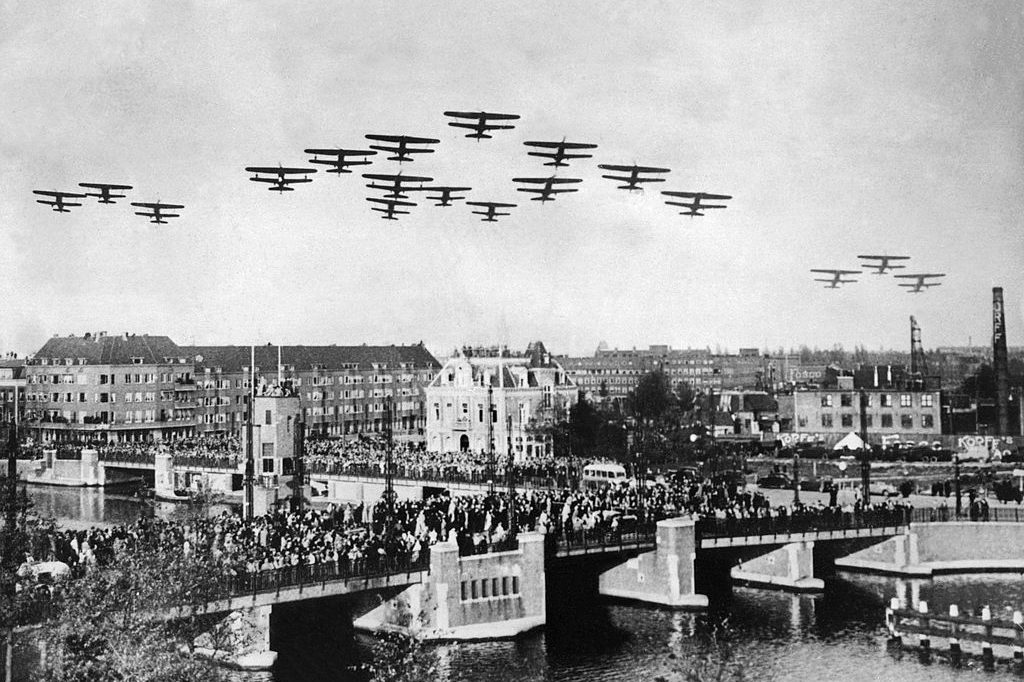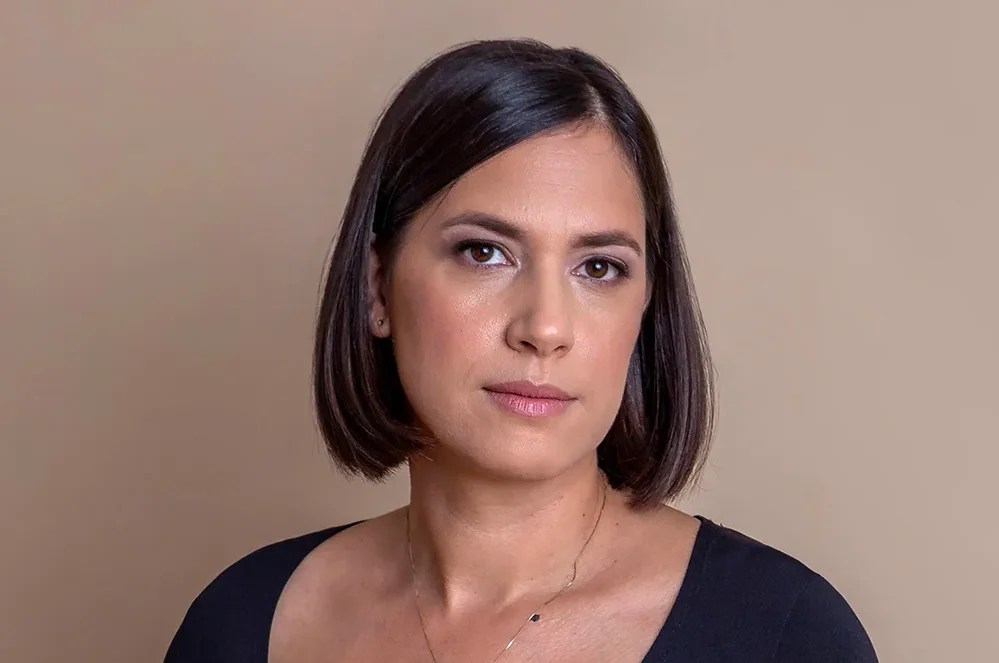Around lunchtime on a late September day in 1944, a young woman stepped into one of the most fashionable cafés on the Champs-Élysées. Her eyes still scanned the room for threats, even though her war had been over for many months.
Known variously as Suzanne, Madeleine, Blanche, Ginnette or Tony, she had “amassed names and personas just as other women of her years and beauty amassed admirers. And she had amassed those too” in the service of her country. Two such admirers now sat opposite her in the café, and she had to decide which one she was going to spend the rest of her life with, and which she would never see again.
Such is the climax of the epic story of love and betrayal that Nahlah Ayed tells, using unpublished interviews and archival and personal documents. Sonia Butt and her husband Guy d’Artois hailed from very different worlds. They met while training in Scotland to be agents of Britain’s Special Operations Executive (SOE), fell in love and married — a marriage that doomed them to fight their war apart. For their own safety, they were sent to fight the Nazis separately, at opposite ends of France.
Inspired by the tactics of such groups as the Irish Republican Army, the SOE was a voluntary force formed by Winston Churchill in 1940 to “set Europe ablaze” through espionage, sabotage and aiding local resistance fighters, and repurposed in late 1943 to impede German reinforcements from reaching the Normandy front lines on, and after, D-Day. But The War We Won Apart is really lit up by one person: Sonia. SOE agents were supposed to be “ordinary people trained to do extraordinary things.” She was anything but.
“Sonia knew trauma early, the way one knows a long-time neighbor,” Ayed writes. Taken to live in France by her vindictive mother when she was three, she suffered physical abuse and malnourishment. But she learned to speak French fluently, an attribute that would prove crucial in her later work.
On the eve of war, fifteen-year-old Sonia was abandoned by her mother and made the trip back to safety in England alone. Later, while she was working in an administrative branch of the WAAF (Women’s Auxiliary Air Force), her father arranged for her to have an interview for a more interesting clerical job, but when she met Major Buckmaster, head of the SOE’s French section, he had other ideas. He asked her whether she would be interested in working behind enemy lines in France. She answered simply, “How do you get there?”
Guy’s family had lost nearly everything in the Great Depression. It was no surprise that he was one of the first Canadians to sign up to fight. While his dreams of being a pilot, or even just an ordinary soldier, were broken because of a childhood illness, he headed to war as a physical training instructor. Ayed observes that “Guy wasn’t the sort who could possibly sit out the war; it called out to him like a long-lost friend.”
The War We Won Apart is a true story that could easily have been told as a James Bond-style thriller where female spies are “beautiful,” men are strong, silent types, the partying is hard, and women are fighting for their right to kill — and die — for their country.
However, Ayed has covered “hot zones” around the world as a journalist, from the Arab Spring to Putin’s invasion of Crimea. Her experience elevates The War We Won Apart from a good update of Ian Fleming to an extraordinary story. She skillfully transports the reader to World War Two as experienced by the brave SOE agents who landed behind enemy lines. Ayed manages to tell the story of the British Sonia and French-Canadian Guy with skill and sympathy, showing a real understanding of how love is forged — and forgotten — in the white heat of war, as well as the opportunities for reinvention that war may give its fortunate survivors, transforming young waifs and strays into skilled professionals, leaders and celebrities.
When Sonia was parachuted into France in May 1944, she became one of the youngest SOE agents ever to do so. Seeing that Le Mans was “crawling with German troops and collaborators,” with General Erwin Rommel’s HQ and the headquarters of the German Seventh Army nearby, she realized she would have to “live more openly than she’d intended” if she wanted to stay alive. This meant living in a little house one street away from the town center, and frequenting black-market restaurants and cafes, under the noses of the Germans who hunted her.
Young and blonde, she was assumed to be German, a collaborator or a German officer’s girlfriend. Her situation, Ayed tells us, “wasn’t just uncomfortable; it was terrifying.”
Sonia had been sent to France to be a messenger. But, shorthanded, the “Headmaster” network quickly employed her to go far beyond the limited roles that women agents were supposed to play behind enemy lines. Instead of passing on messages, she was visiting contacts, sussing out new recruits, training them to how blow things up — one of her specialties — and how to fire a Bren gun, using German convoys for target practice.
All these strands collide in one of book’s most dramatic moments, vividly related by Ayed. One day, Sonia was chatting to a German officer in a black-market restaurant when her handbag slipped off her chair and hit the floor with “the unmistakable thud of a heavy object.” The object was her pistol.
Sonia saw the officer reach down to pick up the bag — and she was done for, unless she killed him first. Just “a breath away from being found out,” she managed to get to it first. The next day she discovered that he was the head of the local Gestapo.
Sonia’s war brought other complications. By a strange twist of fate, her network leader turned out to be Sydney Hudson, a man with whom she’d gone through SOE training and whose advances she had spurned. Meeting him unexpectedly in the field, she wondered if they were fated to be together. Ayed vividly conveys Sonia’s surprise and confusion at this further complication in her life, and delicately examines what it means to betray the man you love in a time of war, when he may already be dead, and you may be soon.
Meanwhile, for Guy, hundreds of miles to the south, the euphoria of landing in one piece was replaced by “the sinking realization that there was no turning back, no way out… he had no uniform, no trained army to help him in his fight, and no Sonia.” Yet Ayed fails to bring the same depth to Guy she does to Sonia. Perhaps as a reflection of his personality, or the time he lived, Guy stubbornly remains opaque to the reader: strong, silent and heroic.
Guy’s mission was to turn the young men in the forests outside the strategic city of Charolles into a fighting force strong enough to take on the Wehrmacht, despite their suspicions about British intentions and a lack of weapons. His “hostility to oversight and impatience with slow progress” were good qualities for such a task.
Ayed skillfully teases out evidence of the personal cost to him of his growing reputation as “Michel le Canadien” after his men’s successful attacks on German posts, convoys and railways. Sonia wanted to avoid risk; Guy relished it. He disguised himself as a laborer to smuggle himself into a German base. He traveled to Gestapo-controlled Lyon at least once for a “vacation,” and he was even at the handover of a 2 million-franc ransom given to two German officers for the freedom of seven captured agents. But wherever Guy was, he went to sleep worrying about Sonia.
Nor did this end after the war, either; not only does Ayed elegantly resolves the love triangle at the heart of the book, but there is an extended coda, focusing on Sonia and her partner’s status as reluctant celebrities and her attempts to have her achievements recognized by the British government, which concludes the story in a manner both insightful and satisfying.
Aspects of this story have been told before, but Ayed’s The War We Won Apart retells it on an epic scale. Despite its being a love story, those readers looking for a page-turning World War Two tale will not be disappointed, and those keen to steer clear of Ian Fleming’s legacy will find a great deal to like here as well. With the insight of her own experiences, Ayed colorfully retells the story of Sonia and Guy on a scale that speaks to the fears — and hopes — of a world on a brink of another global conflict.
This article was originally published in The Spectator’s June 2024 World edition.


























Leave a Reply